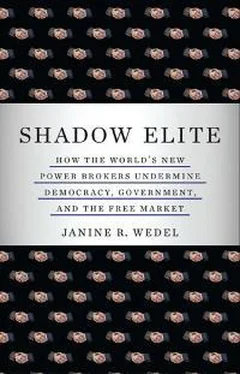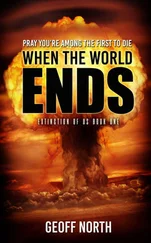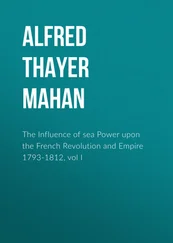56. With regard to scientists challenging the viability of missile defense, see, for example, Briefing Book on Ballistic Missile Defense (May 18, 2004) published by the Center for Arms Control and Non-Proliferation, in cooperation with the Center for Defense Information and the Union of Concerned Scientists.
Regarding both capability and cost of the current program, see GAO, Missile Defense: Actions Are Needed to Enhance Testing and Accountability , GAO-04–409, Washington, DC, April 2004. While Clinton’s missile defense plan carried a $60 billion price tag, William Hartung estimates that the cost of system proposed by Bush II would be as high as $240 billion over the coming two decades. William Hartung, “Ballistic Missile Defense in the Bush Defense Review: Problems and Prospects,” Foreign Policy in Focus , June 2, 2003, http://www.fpif.org/presentations/0105briefingbook/hartung01.html. On the cost of the SDI program, see Fitzgerald, Way Out There in the Blue , p. 481.
57. Non-Neocon core members also active in Star Wars include William R. Van Cleave and Daniel O. Graham.
58. For Dov Zakheim at Booz Allen, see http://www.boozallen.com/publications/article/658016?lpid=827904.
59. With regard to Star Wars advocates as civilians, see, for example, Fitzgerald, Way Out There in the Blue , p. 188.
60. Hartung’s views are from author’s interview with William D. Hartung, July 31, 2007. Douglas Feith, Richard Perle, and Dov Zakheim serve on the Advisory Council of the Center for Security Policy. With regard to the coordinating role played by the Center: author’s interview with William D. Hartung, July 31, 2007. The Center was funded in part by conservative foundations and military contractors (including three of the four big missile defense contractors—Boeing, Lockheed Martin, and TRW). Since it was created in 1988, the Center for Security Policy has received upwards of $2 million in corporate donations (http://www.fpif.org/papers/micr/star_warriors_body.html). The fourth contractor is Raytheon. William D. Hartung, with Jonathan Reingold, About Face: The Role of the Arms Lobby in the Bush Administration’s Radical Reversal of Two Decades of U.S. Nuclear Policy, A World Policy Institute Special Report (New York: Arms Trade Resource Center, May 2002), http://www.worldpolicy.org/
projects/arms/reports/reportaboutface.html.
With regard to organizations advocating missile defense: For instance, eight organizations known for missile defense advocacy sponsored a working group that issued a major 2007 report. The Claremont Institute’s MissileThreat.com project (which has Frank Gaffney as a member of its advisory board), one of the cosponsors of the report, summarized the work as “outlining the need for more ambitious efforts in ballistic missile defense policy” (http://www.claremont.org). Another report cosponsor, the Department of Defense and Strategic Studies, features some of the leading lights in missile defense advocacy on its roster (see http://www.missouristate.edu/dss/). The Department of Defense and Strategic Studies was established at the University of Southern California in 1971 and moved to Southwest Missouri State University, (now Missouri State University) in 1987. Since 2005 it has been based, still as a department of Missouri State University, in Fairfax, Virginia, not far from Washington, D.C.
61. The Hartung quote is from author’s interview with William D. Hartung, July 31, 2007.
62. Michelle Ciarrocca and William D. Hartung, Axis of Influence: Behind the Bush Administration’s Missile Defense Revival, A World Policy Institute Special Report (New York: Arms Trade Resource Center, July 2002), http://www.worldpolicy.org/projects/arms/reports/execsumaxis.html.
63. The Commission to Assess the Ballistic Missile Threat to the United States (often called the Rumsfeld Commission or the Rumsfeld Missile Commission) began operations in January 1998 and released its final report in July of that year. Among the Neocon core members who dominated the commission were Paul Wolfowitz, an important member (Mann, Rise of the Vulcans , pp. 74–75), and James Woolsey. The commission relied on estimates from Lockheed Martin, the gigantic defense contractor, which had gone into missile defense. See Bradley Graham, Hit to Kill: The New Battle Over Shielding America from Missile Attack (New York: Public Affairs, 2001), pp. 43–44. The commission’s report was used to promote missile defense and helped change the tone and substance of the debate in Congress. Using the commission’s findings as the theme of his remarks, for instance, Rumsfeld conducted a closed-door briefing for 250 House members before their key vote calling for deployment of a missile defense system (ibid., pp. 101–112. See also Fitzgerald, Way Out There in the Blue , pp. 494–495).
Cambone was part of an earlier team that issued a January 2001 report sponsored by the National Institute for Public Policy, a missile defense advocacy organization, to urge the incoming administration to adopt a more aggressive nuclear weapons policy. Stephen Hadley was part of that same team.
With regard to the goal of the commissions, see George Lewis, Lisbeth Gronlund, and David Wright, “National Missile Defense: An Indefensible System,” Foreign Policy (Winter 1999–2000), pp. 120–137. The authors state that the missile defense commission “enhanced the perception of a threat from emerging missile states” (p. 122).
64. For Weldon quote, see Michael Dobbs, “How Politics Helped Redefine Threat,” Washington Post , January 14, 2002, p. A1.
The second commission (the result of an amendment to the Defense authorization bill of 1999), was convened in 2000. The Commission to Assess United States National Security Space Management and Organization (informally dubbed the Space Commission, the Rumsfeld Space Commission, or the second Rumsfeld Commission) focused on U.S. space-based defense capabilities. Members of that commission included Neocon core ally David Jeremiah, a member of the board of advisers of the Jewish Institute for National Security Affairs (JINSA is a Neocon core–associated think tank that pays special attention to missile defense), as well as two members of Gaffney’s Center for Security Policy advisory board. For the effects of the second commission on policy, see, for example, Jeremy Singer, Space News , January 23, 2006, http://www.space.com/spacenews/archive06/Space_012306.html.
For updates on Weldon, see Laura Rozen’s blog posts, including http://www.warandpiece.com/blogdirs/007525.html, http://www.warandpiece.com/blogdirs/007661.html.
65. On Rumsfeld creating the position, see, for instance: Jim Garamone, “New Office to Help Set DoD Intelligence Priorities,” American Forces Press Service, May 20, 2003, http://www.defenselink.mil/news/newsarticle.aspx?id=28963. Wolfowitz, Zakheim, and Feith all have served as consultants or on paid advisory boards for Northrop Grumman, the nation’s third largest defense contractor. Hartung, with Reingold, About Face , http://www.
worldpolicy.org/projects/arms/reports/reportabout-face.html. In his book War and Decision , Feith writes that, as under secretary of Defense for policy, “my office was . . . supporting the development of ballistic missile defense” (p. 44).
66. Information about the “Freedom to Manage” program is contained in: Hartung, with Reingold, About Face , http://www.worldpolicy.org/projects/arms/reports/reportaboutface.html.
For Rumsfeld quote, see Bradley Graham, “Rumsfeld Pares Oversight of Missile Defense Agency,” Washington Post , February 16, 2002, p. A2. For exemption language, see: “Rumsfeld Pares Oversight of Missile Defense Agency,” Washington Post , February 16, 2002.
Читать дальше












